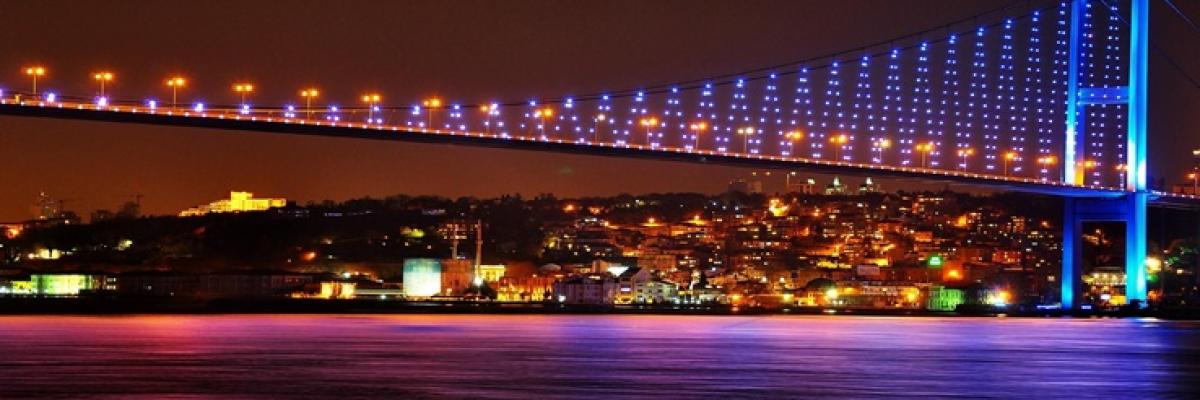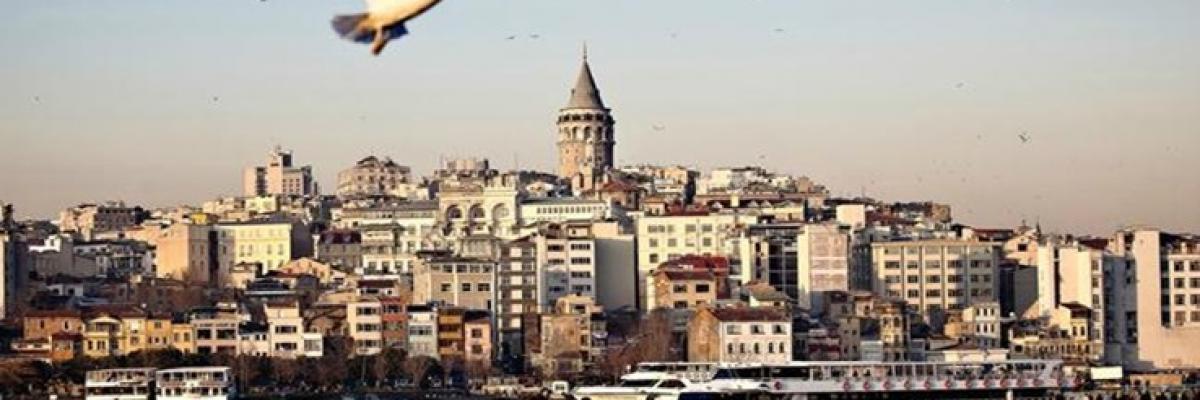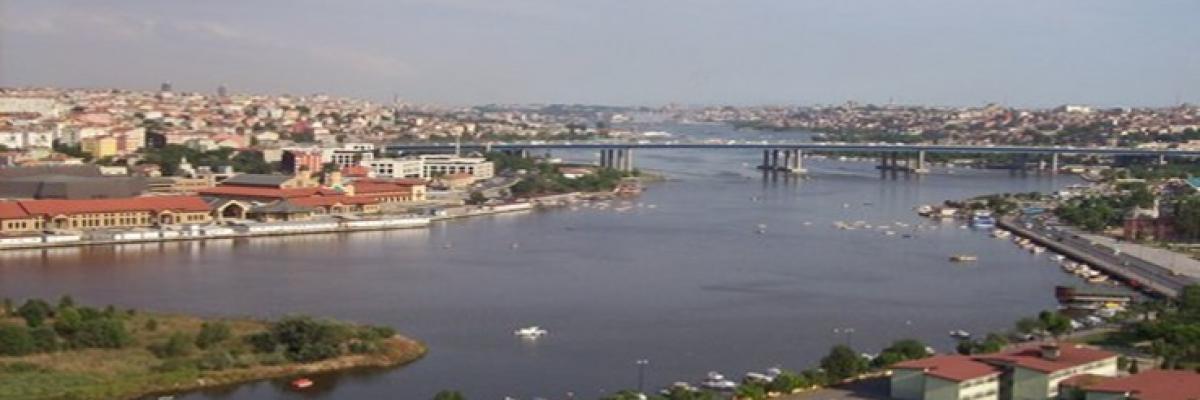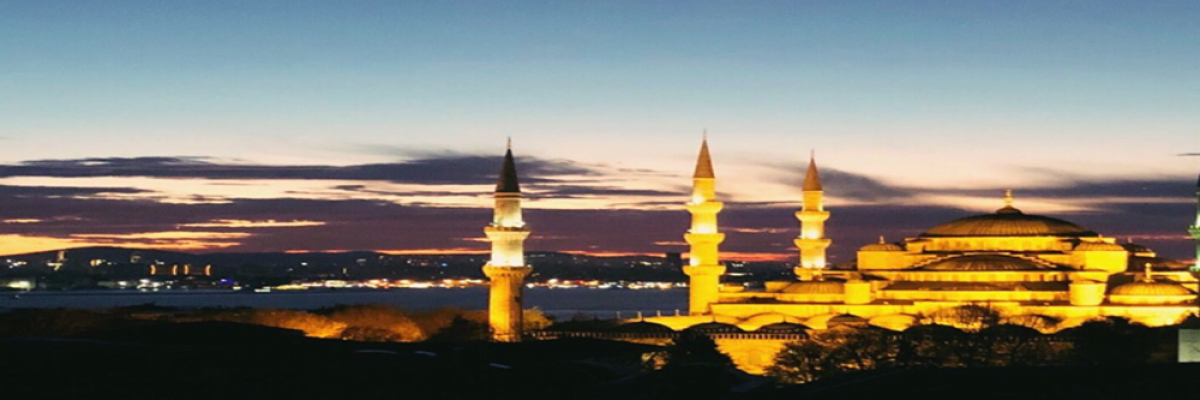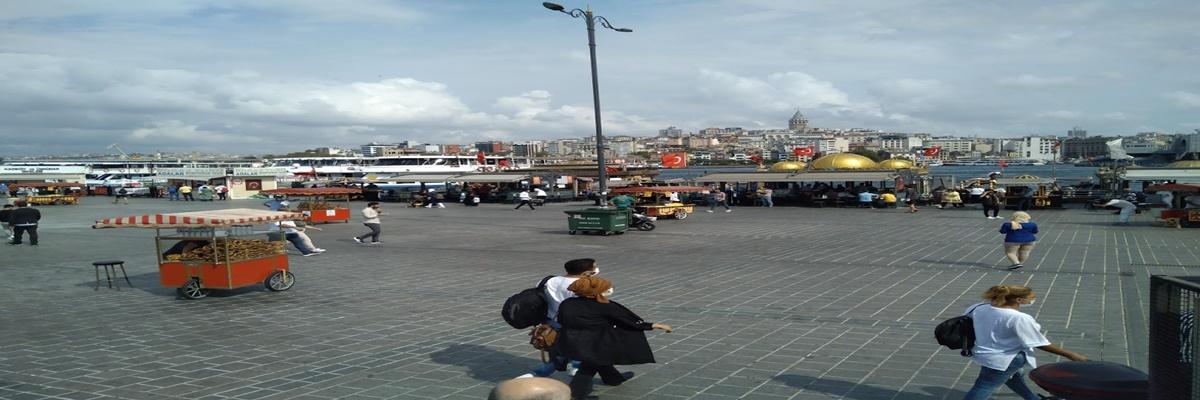Abkhazia
Abkhazia

Official name of the Autonomous Republic of Abkhazia
Geographical Information and Geographical Position: It is located on the eastern coast of the Black Sea and the foothills of the Caucasus Mountains. To the north is the Russian Federation and to the south is Georgia.
Capital: Sukhum
Continent: Asia
Area: 8,432 km²
Population: 242,862, Ethnic distribution of the population 50.71% Abkhaz, 17.93% Georgian, 9.17% Russian, 17.39% Armenian, 4.8% Turkish, Jewish, Svan, Megrel Population growth rate 12.5%
Religion: Muslim 30%, Christian Orthodoxy 58%, Catholic Christian 4%, Judaism 2%, other 6%
Time Zone: Moscow Time Zone (UTC + 3)
Economic Information: Total 682 million USD / Per capita 3000 USD National income 22.6 billion rub
Average National Income Per Capita: 83,201 rub Currency, Russian Ruble Unemployment rate 70%
Industry: Fishing, mining, forestry, light industry, tourism, animal husbandry
Agricultural products Citrus, tea, nuts, tobacco, corn, vegetables, fruits
Management Type Unitary Republic System, Autonomous Republic
History of independence: The Autonomous Republic of Abkhazia, which declared its independence in 1993, has been recognized by Russia, Nicaragua, Venezuela, Nauru, Vanutau and Tuvalu since 2008.
President: Raul Khajimba
Prime Minister: Beslan Butba
Official Languages: Abkhaz, Russian
Literacy rate: close to 100%.
Nationality: Abkhaz
Area Code + 840
General Information
It is a state that separated from the Republic of Georgia in 1994 and declared its independence. This country is recognized only by Russia, Nicaragua, Venezuela, Nauru, the Republic of South Ossetia and the Transnistria.
The Capital of Abkhazia is Sukhum. Abkhazia is a peaceful country that impresses visitors with its history, nature, greenery and beautiful beaches. In addition, we can say that it is a touristic country whose main source of income is tourism. Abkhaz and Russian are used as the main languages in Abkhazia. The Russian Ruble is used as the currency.
According to the local time clock is Turkey further 2 hours. Abkhazia is among the countries that require a visa, you must have submitted your visa application and obtained a visa to Abkhazia before you go.

Location
It is located in the northwest of Georgia, east of the Black Sea.
Most Visited Tourist Cities
Sukhum, Gagra, Gal, Gudauta, Ochamchira and Tucarchal ...
Climate / Weather
Since the country rests on the Caucasus Mountains, it is not affected by the cold of the north. The snow hardly ever falls. When it is not raining during the winter months, you can easily sit on the beach when you wear your coat. Its climate is hot and dry in summers, warm and snowy in winters due to the Caucasus mountain range forming a natural barrier against the northern winds.
Natural resources: Tukarçal has a coal basin where the world's best quality coal is produced and valuable marble deposits.
When to Go?
The country is temperate all year round. You can visit it all year round. But if you visit in the spring, the country with its greenery and lakes will attract your attention when nature awakens.
Country Cuisine / What to Eat What to Drink?
Russian cuisine is generally dominant in Abkhazia. But there are places where you can find local Abkhazian food.

ABHAZYA CHRONOLOGICAL HISTORY
1200 - 1500 It was part of the Ancient Colchis kingdom.
It became a part of 680 Lazica.
100-400 Roman Empire conquered Lazica in the 1st century AD. The Roman Empire regained the independence of Lazica IV. It ruled the region until the century.
600-700 Abkhazia has now become a principality of Byzantium.
700 - 900 II. Leon founded the Kingdom of Abkhazia with the help of the Khazars
1600 Abkhazia was captured by the Ottomans. Part of the region adopted Islam and established the autonomous Principality of Abkhazia.
1810 Abkhazia was taken under the protection of Russia as a feudal principality.
Under the Bucharest Agreement of 1812, the Ottoman state recognized this Russian sovereignty over Abkhazia.
1911 Left the Soviet Union on 26 December 1911.
1921 Abkhazia became an independent Soviet Republic under the name of the Soviet Socialist Republic.
1931 Stalin put an end to the sovereignty of Abkhazia. With the status reduction, the Abkhazian Soviet Socialist Republic was connected to Georgia under the name of the Autonomous Soviet Socialist Republic of Abkhazia.
1990 On June 20, 1990, all laws and agreements from the Soviet era were annulled by Georgia. Sovereignty was declared on 25 August 1990.
1991 Independence was declared on 9 April 1991 and separated from Georgia.
1992 On 23 July 1992, the 1925 Constitution was accepted again.
1994 The new constitution was adopted on 26 November 1994.
1999 3 October 1999 Constitutional referendum was held. On October 12, 1999, the state independence law was passed.
2008 On 26 August 2008, Abkhazia received international recognition for the first time.
Country History
Although Abkhazia regained its independence in the 15th century, it lived under Ottoman rule between 1575 and 1810. In the 16th century, Abkhazians, who became Muslims of their own volition, took part in the Russian-Caucasian struggle from 1810 to 1864, and after the loss of the struggle, they were exiled to the Ottoman lands with other Caucasian peoples. After the exile, Orthodox Georgians, Russians, Armenians, Greeks and Estonians were immigrated to the region.
Abkhazia, one of the main elements of the Mountainous Caucasus Republic founded in 1918, was first conquered by the Georgians and then by the Red Army in 1921. In 1922, the "Negotiated Socialist Federal Republic" consisting of Georgian Abkhazians was established, and in 1931, Stalin attached Abkhazia to Georgia as an autonomous republic. The Stalin period of 1931-53 included the years of genocide and assimilation for Abkhazia. Georgian-Abkhaz conflicts occurred in the region in 1967 and 1978, and in 1978 the constitution was adopted, which somewhat improved the situation of Abkhazia. While Georgians constituted 44% of Abkhazia's population of 560,000 before the Abkhaz-Georgian War; 17% of them were Abkhazians. When Gamsakhurdia became the head of Georgia in 1989, the course of events changed and nationalist policies escalated the tension. By 1991, Georgia abolished all legal decisions and laws related to Abkhazia between 1921-1988 and declared that it was returned to the 1921 constitution. Upon this development, the Abkhaz administration announced that it returned to the 1925 constitution. According to this constitution, Abkhazia, as a sovereign state, formed an "unity" with Georgia on the basis of alliance. On August 14, 1992, the Abkhaz parliament was to meet to discuss what kind of union should be formed with Georgia.
On this date, Georgian military units also entered Abkhazia. Georgian troops captured Gali, Ochamchira, Gagra and the capital, Sukhum. The Abkhaz resistance has intensified with the support of volunteers from the North Caucasian Republics (Adygea, Kabartey-Balkar, North Ossetia, Chechnya and Dagestan) and the Abkhaz diaspora. Russia supported Abkhazia in terms of equipment and logistics during the war. Abkhazia declared its independence on 23 July 1992, but was not recognized by other states. By September 27, 1993, the whole of Abkhazia was liberated from Georgian occupation. While 7,000 people died in the war, 220,000 Georgians became refugees.
Political Situation
Independence was declared in Abkhazia on 23 July 1992. The 6 hundred-year-old historical flag has been modernized and started to be used. The new constitution was adopted in 1994 and the new national anthem in 1996. In 1998, the map of Abkhazia was renewed and the old ones started to be used instead of the place names that were changed before. Abkhazia declared its independence in 1999 but was not recognized internationally. In 2004, the Georgian President of the time Saakashvili stated that Georgia should integrate with Abkhazia and South Ossetia and that they will make efforts for this. The steps taken increased the tension and resulted in Russia's attack on Georgia in 2008. During the Russian-Georgian war, Abkhazia declared its independence along with South Ossetia. Several pacific islands along with Russia, Venezuela, and Nicaragua have recognized this independence.
Economic Situation
Agricultural products and tourism sector, which is mostly composed of citrus fruits, keeps the country's economy alive. However, tourism, which is the most important source of income for Abkhazia, has been hit hard by the economic and political embargoes that have been increasing for four years. In addition, the country is experiencing economic difficulties due to the inability to sell the produced goods.
Turkey-Abkhazia relations
political and economic relations between Abkhazia and Turkey are available. 18% of Abkhazia's foreign trade with Turkey. Abkhazia imported from Turkey which are assembled; construction materials and communications (GSM), petroleum products, non-precious metal products, vehicle materials and food products. The products that Abkhazia's exports to Turkey; coal, scrap metal and forestry products, especially fish products.
Status of Muslims
Evliya Çelebi, whose mother is an Abkhazian, describes a trip to Abkhazia in 1640 in his famous travel book, with all the details. In his work, Evliya Çelebi mentions many mosques in Abkhazia at that time, describes the wars of Muslim Abkhazians against Georgians, a non-Muslim people, their good relations with the Turks and many other details, and draws the landscape of the region at that time.
After the war, the population of independent Abkhazia is 250 thousand. According to a comprehensive study conducted in Abkhazia by Moscow's Institute of Oriental Studies in 2003, 66% of Abkhazians were recorded as Christians, 16% as Muslim, and the rest as atheists and members of other religions. According to the Abkhazian mufti and the Religious Affairs Committee, the proportion of Muslims is around 30%. Abkhazians in the country are generally of a moderate religious nature. Many families, Christian and Muslim individuals live together.
In other words, Muslims in Abkhazia lead their lives in peace with other faithful citizens in the country. However, they are not as lucky as individuals of other religions to learn their religion. This is because there are no religious personnel in the country to provide Islamic education. However, the number of books on the religion of Islam is almost nonexistent in the country. On the other hand, Abkhazians can only perform the Hajj with a Russian passport. A limited number of Abkhazians each year benefit from the quota allocated for Russian Muslims. Another of the most important problems of Abkhaz Muslims is the need for mosques and masjids. In the capital city of Sukhumi and Gudauta, two 100-square-meter villa-style residences without a minaret are used as mosques. For women, there is no place other than their home where they can pray.
Since the independence of Abkhazia, four governments have changed in the country and each has made promises that they will be allowed to build mosques for Muslims. However, for 25 years, Muslim citizens still haven't been able to have their natural right to worship places in the country for various reasons. Moscow, which does not want Abkhazia to leave its own cultural axis, is shown among the main drivers of this situation. Similarly, the Armenian community sees the Muslim-Turkish trend in the country as a threat to itself. Within the framework of all these factors, Abkhazian administrators also endeavor to distance the Muslim people from their religious values and culture.
Muslim diaspora outside the country with the largest Muslim Abkhaz Abkhaz hope of Turkey. Mainly Turkey and Jordan, Syria, the majority of about a million in the US and other countries is composed of an Abkhazian diaspora Muslims. Close historical relations between the Turkish and Abkhaz societies continue today. Despite this close relationship in question, Turkey has taken its place among states that do not accept the independence of Abkhazia by recognizing the territorial integrity of Georgia. Today, particularly in Turkey, lack of enough spiritual and cultural activities in Abkhazia out of other Muslim countries, NGOs, is attracting attention as a major shortcoming.
Culture and Education: Literacy rate in Abkhazia is close to 100%. In the field of cinema, theater, art, literature and folklore, there are many people and organizations whose reputations have crossed the Soviet borders. Even though the press and publications were interrupted due to the destruction of publishing houses and printing houses after dozens of wars, the reading rate of newspapers and magazines is quite high compared to their population. On the other hand, Abkhazia also made significant strides in the field of culture and education after the war, founded the National Abkhaz Academy, which did not exist before.
How to Get to Abkhazia?
Abkhazia can be reached by air and sea transport via Russia. Since there are no direct flights to Abkhazia airports from Istanbul and Ankara, it is possible to reach Abkhazia from Russia's Sochi Airport and from there to Abkhazia. Those who prefer this route need to obtain a multiple-entry Russian visa. Ships from Trabzon port to Sochi are used, and then you can enter the country borders by land.
Abkhazia Attractions

Novi Afon Monastery
The monastery, which was started to be built by a group of monks from Greece in 1874, was completed in 1879 due to the Ottoman-Russian war.In the following years, olive groves and a winery were established for income purposes. shown.

Pitsunda Church
The church is one of the internationally important religious buildings of Abkhazia. At the same time, the Pitsunda Church hosts today's classical music concerts.

Sukhum Botanical Park
The park, which was established as a garden for the cultivation of medicines used in the treatment of malaria for soldiers, was revived in 1894 as a result of the Ottoman-Russian war and was officially named as Sukhum Botanical Park. In 1992, it became one of the few botanical gardens in the world with more than 5000 plants from various corners of the world.
Phoenix Castle
It was built between the 2nd and 4th centuries BC near the Novi Afon Monastery. The castle was restored in 2008 and the watchtower was revived as a viewing place. Today, the most panoramic views of Abkhazia can be watched from this watchtower.
Lake Ritsa and National Park
The Lake and National Park, located within the borders of the Republic of Abkhazia, is visited by tens of thousands of tourists, especially Russia. In order to protect the lake and the surrounding natural life, measures were taken in 1930 and a road was built in 1936 to provide access to the lake from the Black Sea coast.
Afon Cave
Afon Cave, one of the most striking corners of Abkhazia, is one of the largest and deepest caves in the world.
Gagra Beach Park
Gagra Park was built in 1901 as a tourist destination, and was founded by park designer E. Schervinsky and famous gardener K. Brener. In addition to sycamore trees, the park has a total of 400 tours and varieties of plants, including exotic species such as coral tree, magnolia, oleander, sequoia, eucalyptus, feathery Japanese Maple and others.
Waterfall of Tears of the Virgin
The waterfall is in a place that is difficult to reach on the way to Ritsa Lake. Water is poured over the rocks. These spilled waters are named after this.
Muk (Mokva) Church The church, which was built in the 10th century by the Abkhaz King Leon III, was restored in 2002 and reopened for worship.
